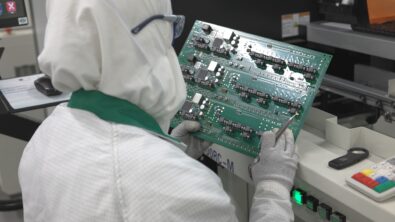Overcoming MedTech Challenge #1: Accelerated Product Innovation

New technologies are reshaping the medical device and diagnostic (MD&D) industry and research and development (R&D) investments are growing: connected devices, wearable technologies, the Internet of Medical Things (IoMT) and device-as-a-service are just a few examples of innovation trends.
Here are a few key insights related to these trends:
- According to a 2017 Frost & Sullivan study, a clear majority (79.2 percent) of Medtech executives perceive connected health as a key growth opportunity theme in the medical device and healthcare industry
- An Evaluate forecast predicts that Medtech R&D spend will grow by 4.3 percent compound annual growth rate (CAGR) to $34B in 2022
- Compared to other global manufacturers, medical device companies are far more likely to strategically prioritize R&D and product development than any other manufacturing industry
- KPMG reported 33 percent of medical device manufacturers perceive the “efficiency in research and product development processes” as the second biggest challenge over the next one to two years.
With these innovation trends, MD&D manufacturers face significant questions: How can you accelerate seamless and high-quality new product introductions (NPI)? How will you introduce new processes with existing production and facilities? How will you get the most out of your research and development (R&D) investment? To gain or keep a competitive edge in this environment, MD&D manufacturers must address three specific demands:
1. Managing the complexity of new product introductions
Medtech manufacturers should expect an increase in complexity and the number of new product development and introduction (NPDI) processes. New technologies and products will drive competition in the upcoming years. Medtech manufacturers should be exploring ways to accelerate their time-to-market.
2. Accelerating speed-to-market while increasing efficiency
Medtech manufacturers will be facing new competitors, many from the small and medium business (SMB) and startup market segments. Incumbent manufacturers will need to respond with increased speed-to-market, quickly addressing demand while managing the lengthy process of regulatory approvals. With agile companies across the globe that have a lower cost of production, Medtech manufacturers will have to justify a price premium with consistently superb product performance.
At the same time, Medtech companies must be continuously increasing their efficiency – both in operations and capital. To improve project efficiency and execution, manufacturers will need to reduce their cost of delivering projects. They will have to increase employee productivity and collaboration by simplifying and standardizing work processes, enabling improvement of project cycle time performance and on-time deliveries.
To improve capital efficiency, manufacturers will have to be selective to implement cost-effective improvements. They will not only need to execute projects on time, on budget and on specification, but they will have to expedite time-to-production and plan for long-term operability, maintainability and reliability.
3. Handling the increasing potential for errors in an accelerated change environment
Innovation will require increased flexibility and integration between product design, engineering and manufacturing. A disconnected system for design, process engineering and manufacturing engineering results in error-prone processes that increase the probability of product delays, unforeseen errors and field failures – especially for NPI.
How integrated Manufacturing Execution Systems address accelerated product innovation
Integrated MES can create a closed-loop manufacturing process to produce a collaborative environment, keep up with competition and efficiently manage change. Closed-loop processes enable fast learning about new product issues, complexities and possible solutions, providing actionable information to design and engineering departments to implement change.
- Using MES provides real manufacturing data to feed simulation and modeling of products and processes to support design for manufacturability and quality by design. It enables you to leverage simulation to shorten commissioning and validation times while increasing process reliability and product quality.
- Using MES ensures process robustness and consistency to minimize unexpected downtime and delays/shortages to meet demand.
- Using MES enables you to detect, fix and prevent errors more easily and quickly, providing end-to-end traceability from supplier to finished goods.
- Using MES ensures quality execution and compliance with nonconformance reporting and corrective and preventive action (CAPA) enforcement connected to quality processes from design to production.
Read the full eBook to learn about more trends facing the Medical Device industry, and how integrated MES is addressing their challenges.


